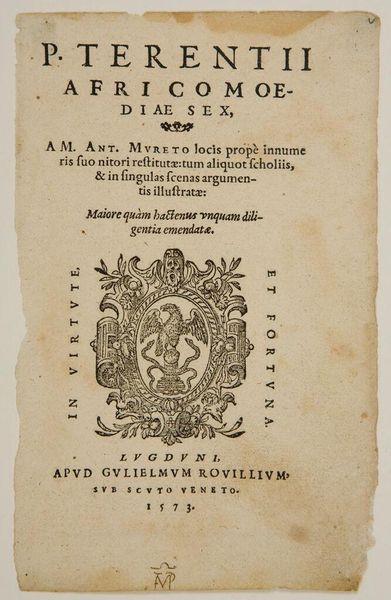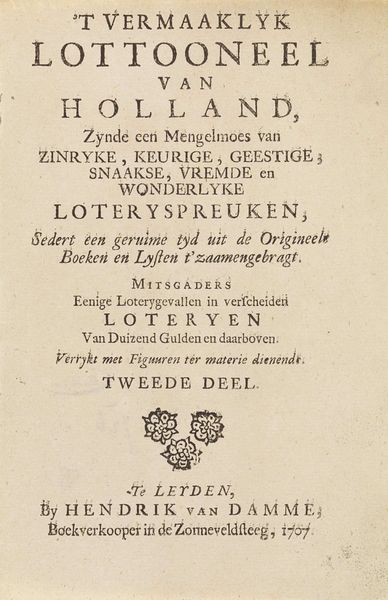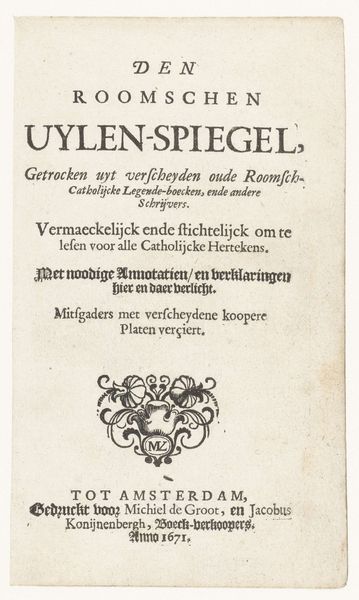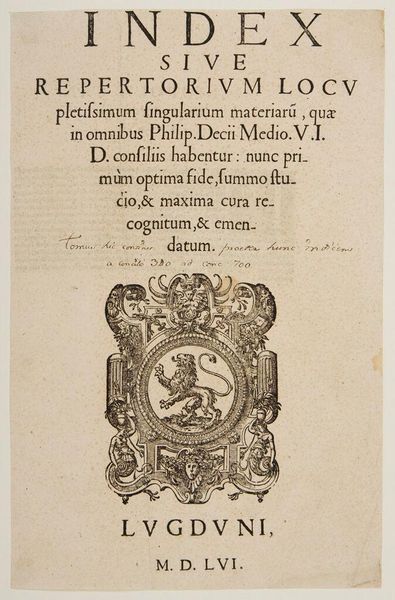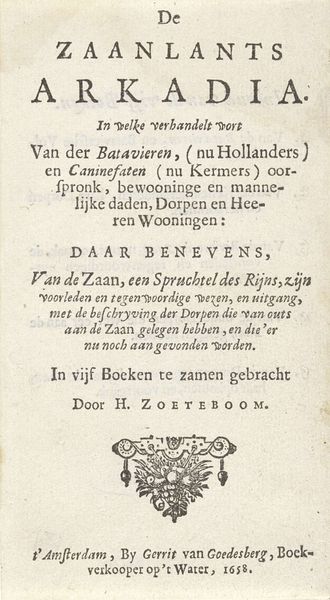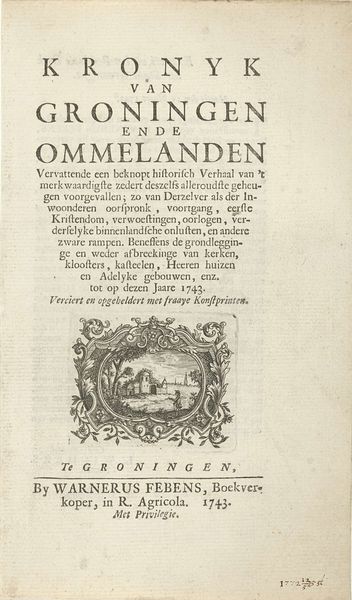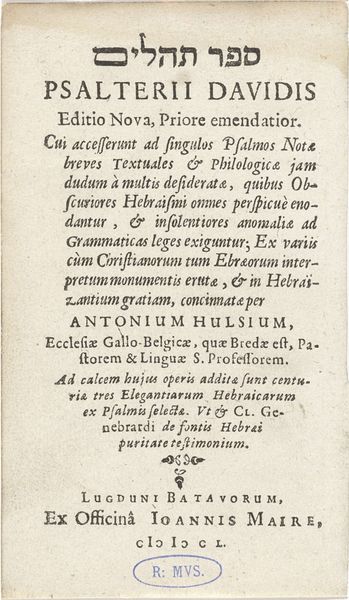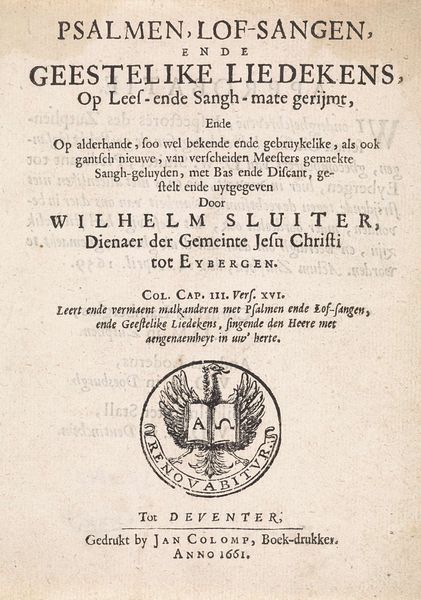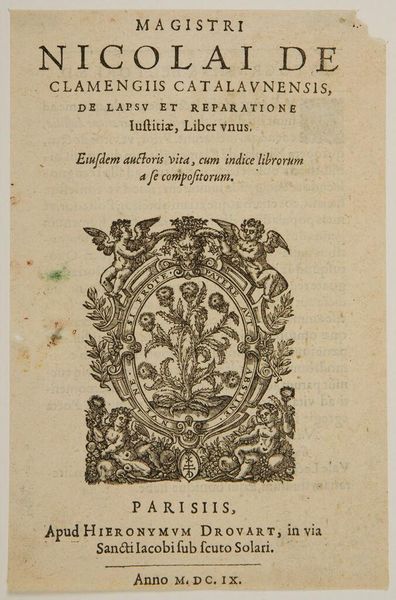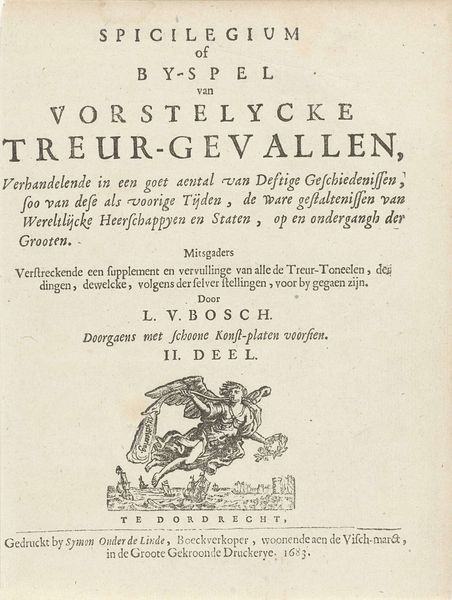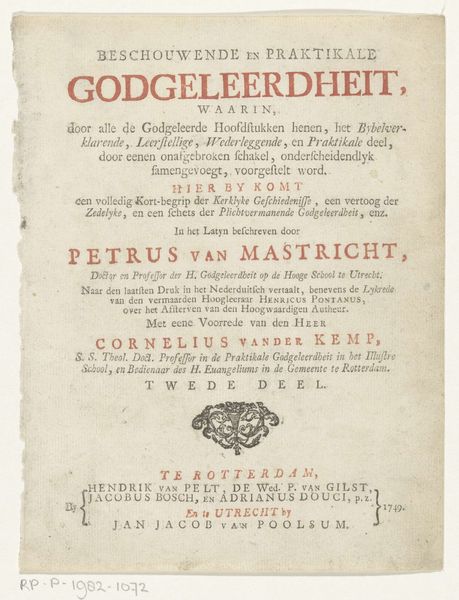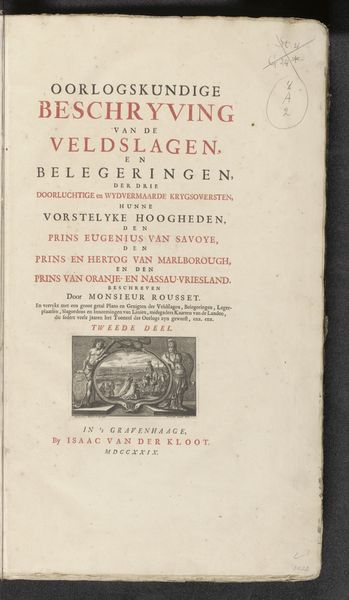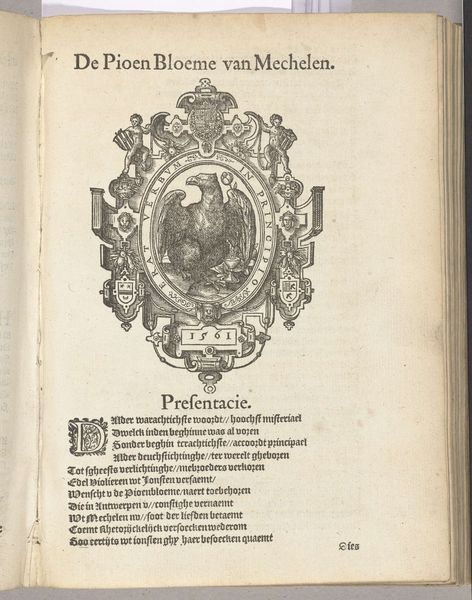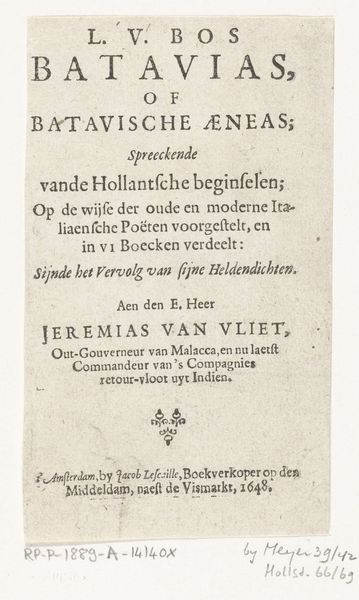
graphic-art, print, typography, engraving
#
graphic-art
#
script typography
#
hand-lettering
#
baroque
# print
#
old engraving style
#
hand drawn type
#
hand lettering
#
typography
#
hand-drawn typeface
#
thick font
#
handwritten font
#
golden font
#
engraving
#
historical font
Dimensions: height 155 mm, width 97 mm
Copyright: Rijks Museum: Open Domain
Curator: Let's turn our attention to this title page, a print from 1734. It advertises a collection called "De Gedichten" or "The Poems" of Hendrik van Huls. The artist of the page is Abraham Ambrullaart. Editor: Immediately, I’m struck by how ornate it is. Even a simple title page feels like a declaration, right? All the varied fonts, the intricate emblem at the center—it really emphasizes the value placed on literature at the time. Curator: Precisely. This object provides insight into the culture of publishing in the Dutch Republic. Consider the role of the bookseller, here functioning as both publisher and artist. Ambrullaart's name is prominently displayed, highlighting the commercial aspects of artistic creation during the Baroque period. The fact that is specifies “with copper plates” tells us this would have been an important, valuable book. Editor: I find it interesting how the poems are described: “Geestelyke en Vleeschelyke Verklaaringen” - Spiritual and Carnal Declarations. It seems van Huls wants to tackle it all—body and soul! Is it playing with expectations? Highlighting the relationship between what is sacred versus the everyday or profane? Curator: Undoubtedly, these Baroque publications reveal a world in transition, one where the sacred and secular intermingle. The choice of fonts also interests me; they appear very intentional in categorizing each group of poems. The larger red ones catch your eye first, of course. Editor: And notice the small illustration; three figures surrounding a central portrait. It's an odd framing choice and could definitely lead us down the path of unpacking the intended audience. Were these common, to have miniature portraits as an artistic component of poetry collections? Curator: Indeed. Title pages are seldom only what they appear. They functioned as a carefully crafted gateway, shaping reception and reinforcing the social standing of the work itself. It’s a testament to the cultural significance afforded to both artist and author. Editor: Ultimately, this work exemplifies the early modern struggle between earthly desires and spiritual aspirations. And how those contradictions fuel our creativity. It gives us a lot to unpack!
Comments
No comments
Be the first to comment and join the conversation on the ultimate creative platform.
